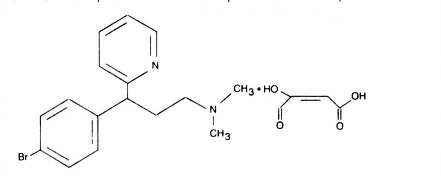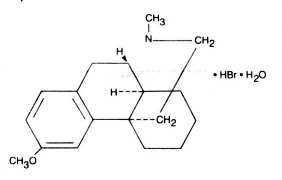SILDEC DM
-
brompheniramine maleate,
pseudoephedrine hydrochloride and
dextromethorphan hydrobromide syrup
Silarx Pharmaceuticals, Inc
----------
BROMPHENIRAMINE MALEATE/PSEUDOEPHEDRINE HYDROCHLORIDE/ DEXTROMETHORPHAN HYDROBROMIDE SYRUPDESCRIPTION
Antihistamine/Decongestant/Antitussive for oral use.
For adults and pediatric patients (2 years and older)
Brompheniramine Maleate/Pseudoephedrine Hydrochloride/Dextromethorphan Hydrobromide Syrup
Each teaspoonful (5 mL) contains brompheniramine maleate, 4 mg; pseudoephedrine hydrochloride, 45 mg; dextromethorphan hydrobromide,15 mg.
Inactive ingredients: citric acid, D&C Red No. 33, FD&C Blue No. 1, glycerin, flavor, purified water, saccharin sodium, sodium benzoate, sodium
citrate, sorbitol.

Brompheniramine maleate (2-Pyridnepropanamine, y-(4-bromophenyl)- N, N-dimethyl-, (±)-, (Z)-2-butenedioate).

Pseudoephedrine hydrochloride (Benzenemethanol, α-[1-(methylamino)ethyl]-,[S-(R*,R*)]-, hydrochloride) is the hydrochloride of pseudoephedrine, a naturally occurring dextro-rotatory stereoisomer of ephedrine.

Dextromethorphan hydrobromide (Morphinan, 3-methoxy-17-methyl-, (9α, 13α, 14α)-, hydrobromide monohydrate) is the hydrobromide of dform race methorphan.
CLINICAL PHARMACOLOGY
Antihistaminic, decongestant, and antitussive actions.
Brompheniramine maleate possesses H1 antihistaminic activity and mild anticholinergic and sedative effects. Peak plasma concentration is reached in 5 hours. Urinary excretion is the major route of elimination. The liver is assumed to be the major site of metabolic transformation.
Pseudoephedrine hydrochloride is an oral sympathomimetic amine that acts as a decongestant to respiratory tract mucous membranes. While its vasoconstrictor action is similar to that of ephedrine, pseudoephedrine has less pressor effect in normotensive adults. Serum half-life for pseudoephedrine is 6 to 8 hours. Acidic urine is associated with faster elimination of the drug. About one-half of the administered dose is excreted in the urine.
Dextromethorphan hydrobromide is a nonnarcotic antitussive with effectiveness equal to codeine. It acts in the medulla oblongata to elevate the cough threshold. Dextromethorphan does not produce analgesia or induce tolerance, and has no potential for addiction. At usual doses, it will not depress respiration or inhibit ciliary activity. Dextromethorphan is rapidly metabolized with trace amounts of the parent compound in blood and urine. About one-half of the administered dose is excreted in the urine as conjugated metabolites.
INDICATIONS AND USAGE
For relief of coughs and upper respiratory symptoms, including nasal congestion, associated with allergy or the common cold.
CONTRAINDICATIONS
Patients with hypersensitivity or idiosyncrasy to any of its ingredients. Sympathomimetic amines are contraindicated in patients with severe hypertension, severe coronary artery disease and patients on monoamine oxidase (MAO) inhibitor therapy. Antihistamines are contraindicated in patients with narrow-angle glaucoma, urinary retention, peptic ulcer, and during an asthma attack. Dextromethorphan should not be used in patients receiving a monoamine oxidase inhibitor (MAOI) or for 2 weeks after stopping the MAOI drug.
WARNINGS
Sympathomimetic amines should be used judiciously and sparingly in patients with hypertension, diabetes, ischemic heart disease, hyperthyroidism, increased intraocular pressure, or prostatic hypertrophy. (See CONTRAINDICATIONS.) Sympathomimetic amines may produce CNS stimulation with convulsions or cardiovascular collapse with accompanying hypotension. The elderly (60 years and older) are more likely to exhibit adverse reactions. Antihistamines may cause excitability, especially in children. At doses higher than the recommended dose, nervousness, dizziness, or sleeplessness may occur. Do not exceed recommended dosage. Administration of dextromethorphan may be accompanied by histamine release and should be used with caution in atopic children.
PRECAUTIONS
GENERAL
Before prescribing medication to suppress or modify cough, identify and provide therapy for the underlying cause of the cough and take caution that modification of cough does not increase the risk of clinical or physiologic complications. Dextromethorphan should be used with caution in sedated or debilitated patients and in patients confined to supine positions.
Use with caution in patients with hypertension, heart disease, asthma, hyperthyroidism, increased intraocular pressure, diabetes mellitus, and prostatic hypertrophy.
Information for Patients: Avoid alcohol and other CNS depressants while taking this product. Patients sensitive to antihistamines may experience moderate to severe drowsiness. Patients sensitive to sympathomimetic amines may note CNS stimulation.
Drug Interactions: Antihistamines may enhance the effects of tricyclic antidepressants, barbiturates, alcohol, and other CNS depressants. MAO inhibitors prolong and intensify the anticholinergic effects of antihistamines. Sympathomimetic amines may reduce the antihypertensive effects of reserpine, veratrum alkaloids, methyldopa, and mecamylamine. Effects of sympathomimetics are increased with MAO inhibitors and betaadrenergic blockers. The cough-suppressant action of dextromethorphan and narcotic antitussives are additive. Dextromethorphan is contraindicated with monoamine oxidase inhibitors (MAOI). (See CONTRINDICATIONS section.)
Pregnancy Category C: Animal reproduction studies have not been conducted with this product. It is not known whether this product can cause fetal harm when administered to a pregnant woman or affect reproduction capacity. Give to pregnant women only if clearly needed.
Nursing Mothers: It is not known if the drugs in this product are excreted in human milk. Since many drugs are excreted into human milk and because of the potential for serious side effects in the nursing infant, this product should only be given to nursing mothers if clearly needed. Pediatric Use: Safety and effectiveness of this product in pediatric patients below the age of two years have not been established.
ADVERSE REACTIONS
Antihistamines: Sedation, dizziness, diplopia, vomiting, diarrhea, dry mouth, headache, nervousness, nausea, anorexia, heartburn, weakness,
polyuria and dysuria and, rarely, excitability in children. Urinary retention may occur in patients with prostatic hypertrophy.
Sympathomimetic amines: Convulsions, CNS stimulation, cardiac arrhythmia, respiratory difficulties, increased heart rate or blood pressure, hallucinations,
tremors, nervousness, insomnia, pallor and dysuria.
Dextromethorphan: Drowsiness, dizziness, and GI disturbance.
OVERDOSAGE
The signs, symptoms, and treatment described below are those for H1 antihistamines, pseudoephedrine and dextromethorphan overdose. Symptoms: Should antihistamine effects predominate, central action constitutes the greatest danger. In the small child, predominate symptoms are excitation, hallucination, ataxia, incoordination, tremors, flushed face and fever. Convulsions, fixed and dilated pupils, coma, and death may occur in severe cases. In the adult, fever and flushing are uncommon; excitement leading to convulsions and postictal depression is often preceded by drowsiness and coma. Respiration is usually not seriously depressed; blood pressure is usually stable.
Should sympathomimetic symptoms predominate, central effects include restlessness, dizziness, tremor, hyperactive reflexes, talkativeness, irritability, and insomnia. Cardiovascular and renal effects include difficulty in micturition, headache, flushing, palpitation, cardiac arrhythmia, hypertension with subsequent hypotension and circulatory collapse. Gastrointestinal effects include dry mouth, metallic taste, anorexia, nausea, vomiting, diarrhea, and abdominal cramps.
Dextromethorphan may cause respiratory depression with a large overdose.
Treatment: a) Evacuate stomach as condition warrants. Activated charcoal may be useful. b) Maintain a non-stimulating environment. c) Monitor cardiovascular status. d) Do not give stimulants. e) Reduce fever with sponging. f) Treat respiratory depression with naloxone if dextromethorphan toxicity is suspected. g) Use sedatives or anticonvulsants to control CNS excitation, and convulsions. h) Physostigmine may reverse anticholinergic symptoms. i) Ammonium chloride may acidify the urine to increase urinary excretion of pseudoephedrine. j) Further care is symptomatic and supportive.
DOSAGE AND ADMINISTRATION
| AGE | DOSE* | FREQUENCY |
| 2-6 years | 1/2 teaspoonful (2.5 mL) | QID |
| Adults and pediatric patients 6 years and over | 1 teaspoonful (5 mL) | QID |
HOW SUPPLIED
Brompheniramine Maleate/Pseudoephedrine Hydrochloride/Dextromethorphan Hydrobromide Syrup, grape flavored, in 4 fl oz and 16 fl oz bottles.
Dispense in a tight, light-resistant container as defined in USP.
Store between 46°-86°F (8°-30°C). Avoid exposure to heat. Keep tightly closed.
Rx only.
Manufactured by:
Silarx Pharmaceuticals, Inc.
Spring Valley, NY 10977

| SILDEC DM
brompheniramine maleate and pseudoephedrine hydrochloride and dextromethorphan hydrobromide syrup |
||||||||||||||||||||||
|
||||||||||||||||||||||
|
||||||||||||||||||||||
|
||||||||||||||||||||||
|
||||||||||||||||||||||
|
||||||||||||||||||||||
| Marketing Information | |||
| Marketing Category | Application Number or Monograph Citation | Marketing Start Date | Marketing End Date |
| unapproved drug other | 11/01/2001 | 06/30/2010 | |
| Labeler - Silarx Pharmaceuticals, Inc (161630033) |